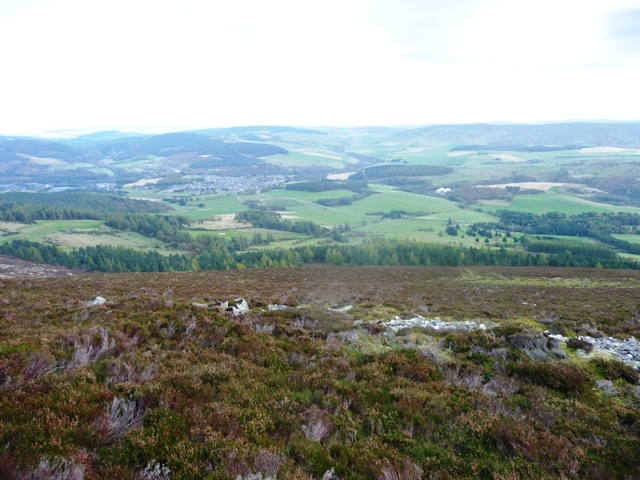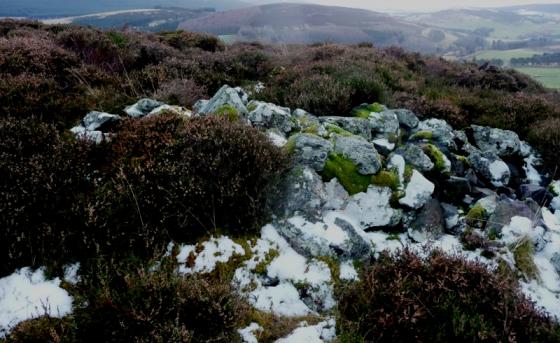The fort up here is only one of a variety of things you can point to around Dufftown to illustrate the undoubtedly true tale that follows. The writer was clearly very proud of his local legend.
Battle of Mortlach:-- In the year 1010, Malcolm II. obtained, in this parish, that signal victory over the Danes, which has ever since given the place a superior degree of fame, and makes it respected as classic ground. Human nature is inclined to regard, with a peculiar reverence, the very spot of earth on which was of old transacted any remarkable event.
Malcolm had been beat the year before by the Danes, and was obliged to leave them in possession of the lands of Moray. Anxious, however, to expel such intruders, he now returns upon them from the south, with a powerful force; and the Danes, having intelligence of his motions, came forward to give him battle.
It’s excitingly written but rather lengthy – you can read it here in the 1796 statistical account.
stat-acc-scot.edina.ac.uk/link/1791-99/Banff/Mortlach/17/442/
Essentially three of the Scottish generals get themselves killed in their enthusiasm, and the home side fears that the game’s up. But the sensible King pops over to the church and has a quick pray. This perks him up and after a rousing speech to the army he ‘throws Enetus, one of the Danish generals, from his horse, and kills him with his own hand.’ After this the Scots rally and see off the Danes. There’s the cunning idea that the river could have been dammed to flood the Danish while they slept, but the author can’t quite fit that into the story convincingly, so attributes it to another occasion.
As traditional and pretty sure memorials of this famous battle, are pointed out;
1. The vestiges of an intrenchment, very distinct at this day, on the summit of the little Conval-hill, called by the neighbourhood the Danish Camp.
2. A number of tumuli, or cairns, supposed to have been collected over the bodies of the fallen.
3. A huge and irregularly roundish stone, formerly, it is said, on the grave of Enetus, but now rolled a few ells from its station over the corpse, and made a part of a fence about a field of corn; where it is denominated the Aquavitae Stone. To account for this appellation, and to prevent antiquarians from puzzling their brains with dark and learned hypotheses in time to come, it may not be improper to tell, that the men, whose brawny strength removed this venerable tenant, finding it rather a hard piece of work, got, as a solace for their toil, a pint of whisky, out of which, immediately, around the stone, they took a hearty dram. Every body knows, that, in Scotland, whisky and aquavitae are the same.
There are numerous other ‘proofs’ as well, including (possibly) a gold torc.
The stone, according to the RCAHMS record, was broken up c1860, and before being moved was originally at NJ32314072.















































































